The World of Orlando Jax
The World Index
Exploring the world of Orlando Jax.
Signs and Meaning
Does everything you write have to have some meaning, some higher purpose? I think not. The whole point of writing is the freedom to express yourself. The beauty of it is you can write complete gobbledegook and it doesn't matter so long as it's working for you. But when you're writing a story for other people I think it does make sense to have a back story for some things. Even if you never tell it, it probably helps to keep you consistent as the story progresses. This is the back story of the sign on the front of the Gildo de la Serĉanto:
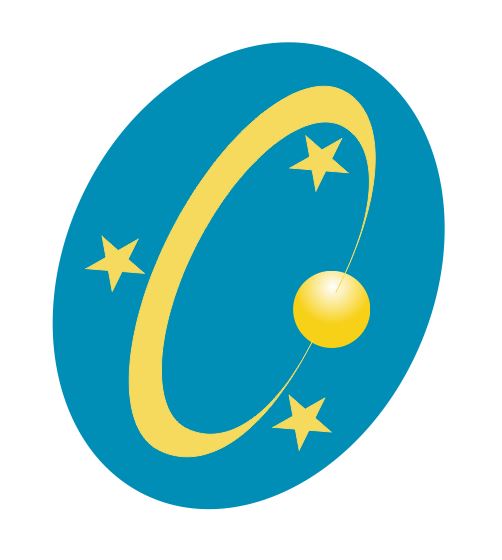
The Guild is the repository for information on exploratory voyages, the ones that opened up the transport and trade routes across the Galaxy. The sign represents that first established route based on a number of successful and unsuccessful voyages. From the planet Montrachet, the Serĉanto mapped three wayfinder stars that brought their ships safely back to the spaceport outside of the city of Duclair. Much like the mariners of old and modern spacecraft (with their star trackers) use the stars to navigate, so the Serĉanto use stars to mark their routes. Stars are by no means uniform in nature. They vary enormously in size and brightness as this figure shows:
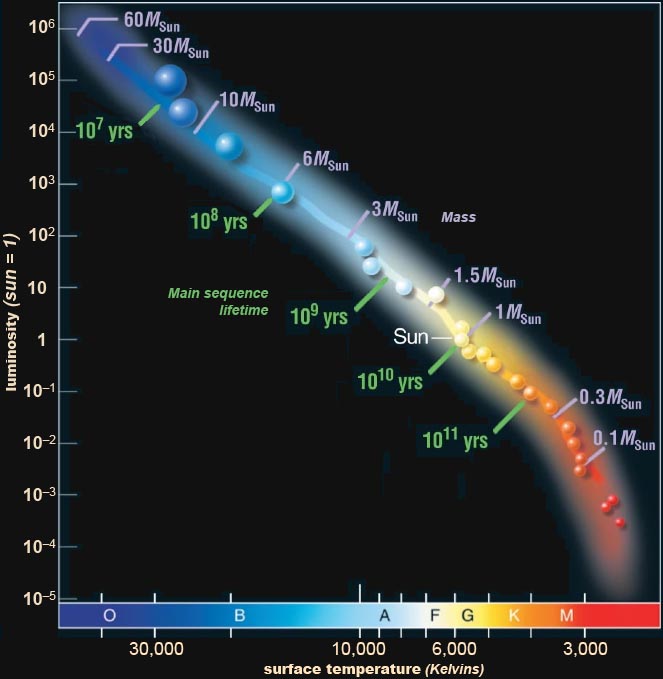
Just imagine coming across one of those white-blue monsters! What power! Anyway, I can do better than simply represent these things as gold stars. Navigators have always given names to features as they are discovered. Australia and New Zealand are littered with names assigned by the first European explorers, and in many cases they have stuck. So I can go a bit further with that sign:
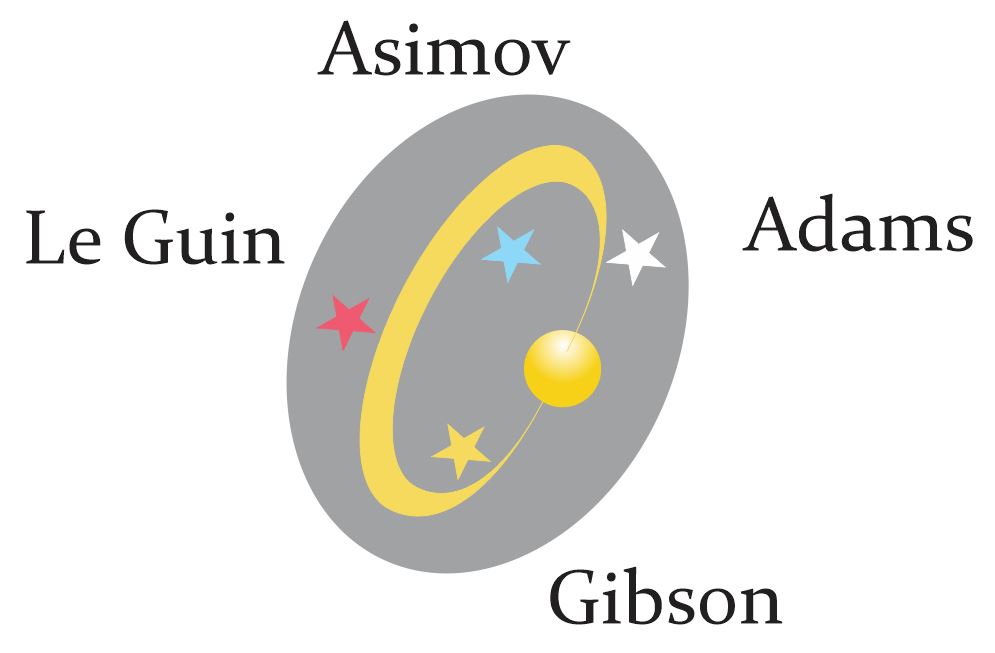
I couldn't help myself:
- A white star for Douglas Adams for the Hitchhickers Guide to the Galaxy, a trilogy in five parts (ridiculous and brilliant),
- A blue giant for Isaac Asimov for so many things but particularly The Gods Themselves,
- A cool red giant for Ursula K Le Guin for The Left Hand of Darkness, and
- A Sun like star for William Gibson for Neuromancer.
Now I could leave it there but technology offers us so many other possibilities - there is no need to stay in the 2D realm anymore - put it into 3D. With a program like Blender you can do just that:

I would be the first to admit that is very rough and ready - it is. The fantastic thing about 3D is that you can create these objects in space and then move around them, mess with the lighting and the colour, and encounter serendipitous moments as you see connections or relationships that might not be possible any other way. If you've never used Blender I would recommend having a go. It's free, very powerful and feature rich, and just takes time and practice to master. To save yourself a lot of grief work your way through this course to get you going.
That is the back story of the sign of the Gildo de la Serĉanto.
Back to topIllustrated
As a writer and would be successful author I am the first to admit that my sales of Orlando Jax have not been exactly epic. I am currently at "#4,628,285 Paid in Kindle Store" - I didn't know there were that many books in the world, let alone the Kindle store. By any measure, being there is not a rip snorting success story - but that is OK. It's a story I started writing over ten years ago when I knew even less about writing than I do now. I know for a fact that as a writer you cannot blame the public for not wanting to read your work. The work has to stand on its own merits - people have access to so much good content that for yours to make a difference it has to be quite unique or stunning and probably both. So what to do? Give Orlando Jax up as a dead loss? Try another story? Or have a go at re-writing what is there?
I like the themes and characters I have sketched out. But crucially how do I make it better? Well I've known for a long time that I'm quite a visual person and can knock up a diagram at the drop of a hat. That set me thinking that perhaps one way I can make things better - richer, more colourful, more engaging - is to visualise the book in some sort of illustrated way. That might bring with it better ideas for the narrative. So that is where I'm heading.
Now the trouble with this is that being a good illustrator is probably harder than being good at writing. I have nothing but admiration for illustrators who can constantly churn out exceptional work - they are artists. But I'm not necessarily aiming for that - I want images that can help spark ideas that add quality to the story. So where to start?
Well the Gildo de la Serĉanto is a good place. The building where they record the first exploratory voyages into the uncharted regions of the galaxy. What would that building look like? It could be anything from a gleaming spike of spun diamond to a prefabricated concrete industrial building. The story puts it on the planet Montrachet, in the old city of Duclair, on La Rue des Navigateurs. That hints at age, a building that could easily pre-date space travel, and that is where I have fixed my building, or the facade at least. Behind the facade could be the most futurist space ever imagined. It might not even be a space, but simply a portal to other places - that is another discussion.
There is an older building in the UK that I have always been attracted to called Ashdown House. There is something about its bold stance in the English countryside, its particular and definite style and that the little pagoda on the roof makes a perfect setting for an ansible.

So with that vision in mind I started to sketch the facade of my building. I thought about using pen and ink, but modern digital tools are almost as easy and can give you that tactile feedback and level of control. So I had a go with a rubber pencil and the touch screen on my laptop.

Yes - that sort of worked but I pretty quickly decided it wasn't a technique that was really helping me. I reverted to doing things the old fashioned way with a conventional drawing package.
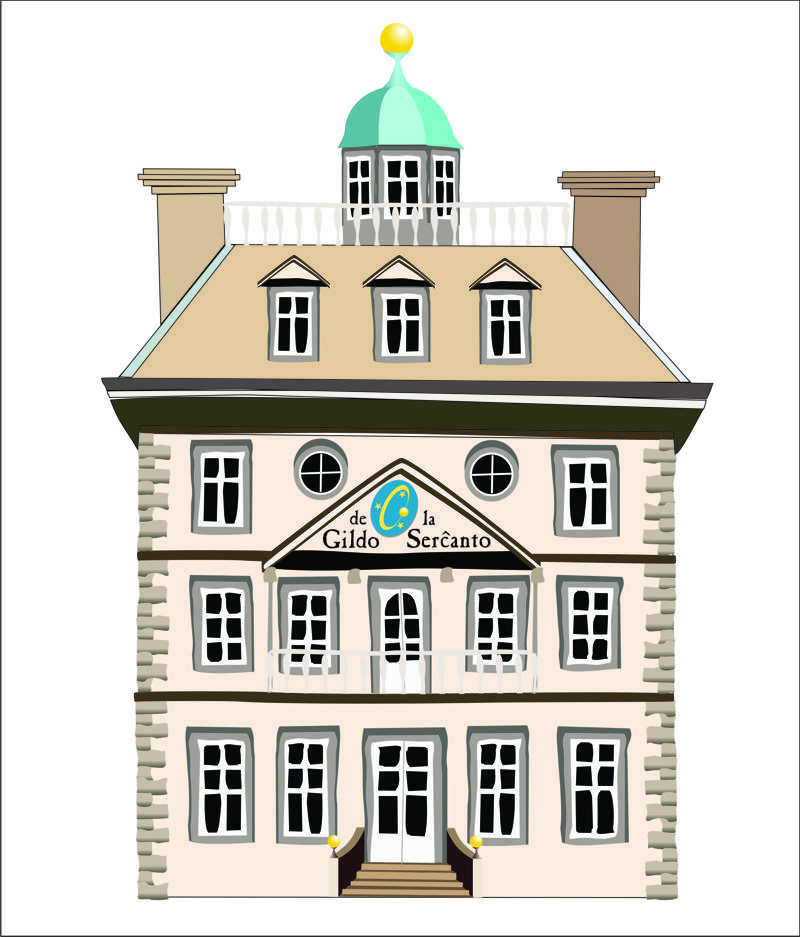
That looked better - the colours are very loosely based on the colours I could see in the photograph of the building itself. But colours are problematic - most e-readers have black and white screens. A good drawing package will do a neat trick and let you automatically swap a colour format (like CMYK) with a simple greyscale. So I ended up with:

And I'm reasonably happy with that. But did it help the writing? Well yes, I think it will. It has forced me to think harder about Duclair and how the building itself would be used. It suggested to me that sketching a map of the city might be helpful. It begins to inform me about the possible details of this place. So for the time being at least I'll continue down this track.
Back to topThe Claw
One of the most important characters in the book is Orlando Jax' ship - the Claw.
The Claw is a true spaceship, a galaxsia class vessel which means it capable of travelling to any part of the galaxy. The Claw is also an atmosphere capable craft. It is not restricted to staying in orbit around a planet but can withstand the forces generated by moving at speed through an atmosphere.
If the Claw can land on a planet's surface how does it land? Does it descend and rise in a Harrier VTOL kind of a way using a GRAVEX gravity plate? Well I think it might as well, but the story at the moment doesn't require that. Given that this is a pirate ship, and on Old Earth pirates were based on ships, it made perfect sense for the Claw to be a space ship - an updated and much more capable version of the great flying boats of the 1930s and 1940s. Of these my favourite is the Empire Class flying boat - it's just a fabulous, bizarre but beautiful machine.

It was designed and developed by Short Brothers during the 1930s to meet the requirements of the growing commercial airline sector, with a particular emphasis on its usefulness for the then-core routes that served the United Kingdom. It was developed and manufactured in parallel with the Short Sunderland maritime patrol bomber, which went on to serve in the Second World War; a further derivative that was later developed was the piggy-back Short Mayo Composite.
The development of the Empire class was heavily influenced by its primary customer, Imperial Airways. It was designed around their requirements. Imperial Airways, and its successor, the British Overseas Airways Corporation (BOAC), along with Qantas and TEAL, operated the type in commercial service. Upon entering service, the Empire routinely flew between the British mainland and Australia and the various British colonies in Africa and Asia, typically carrying a combination of passengers and mail cargo; the Empires were also used on various other routes, such as on the service between Bermuda and New York City.
The plane did not fly at night. Typically passengers would disembark and the spend the night in a luxury hotel. A trip from London to Sydney could take up to ten days and include stops in the Mediterranean, Egypt, India, Singapore and Indonesia. Singapore to Sydney would mean sleep-overs at Surabaya, Darwin and Townsville and would cost around AU$70,000 in todays money - more than a years wages for most people. It was a luxury service for the rich and the civil servants needed to keep the British Empire running. Have a look at what was available on the plane itself.
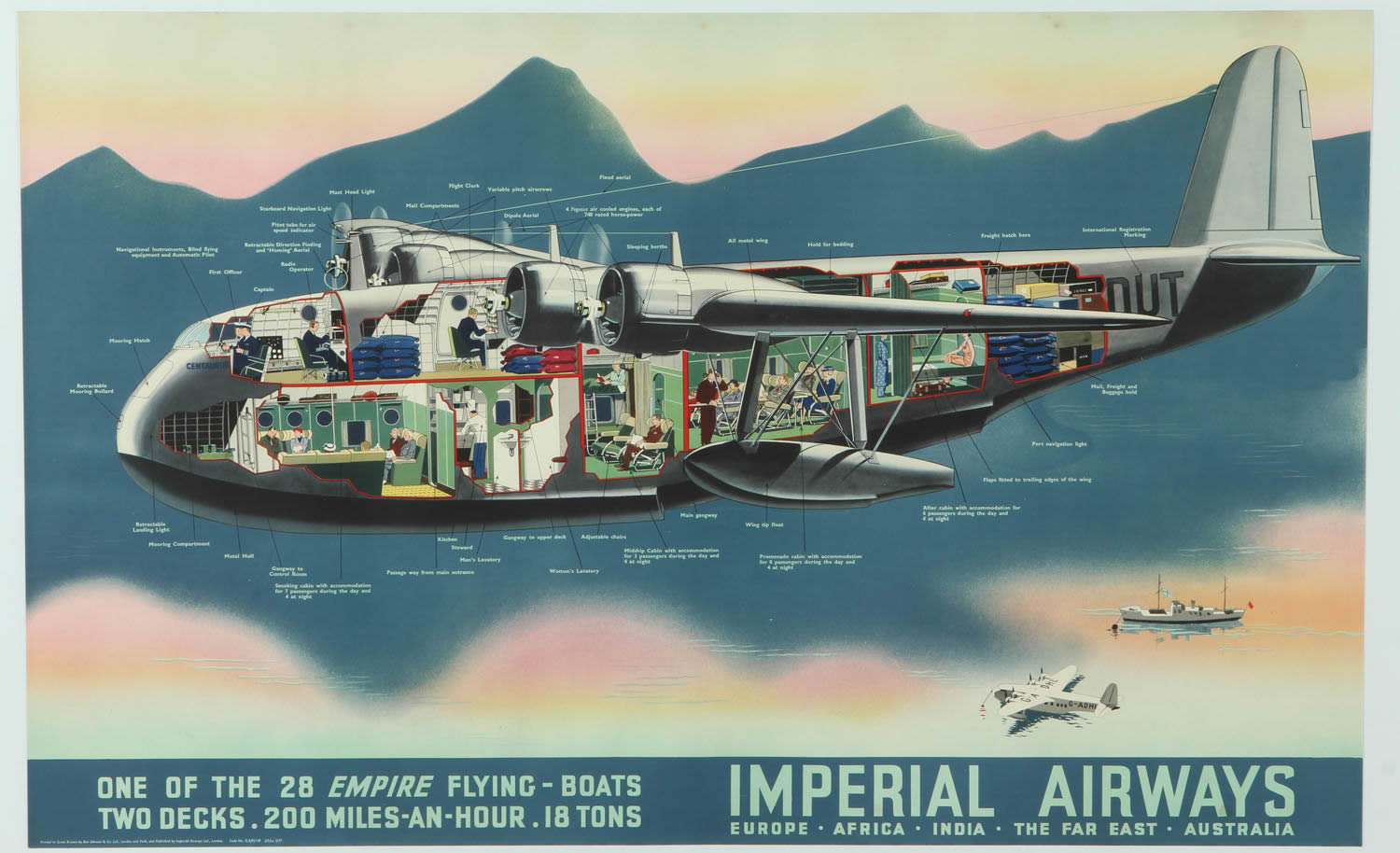
The design world has moved on a great deal, and boat design is no exception. Compare the lines of the Empire Class with the stunning lines of the Earthrace/Ady Gil.
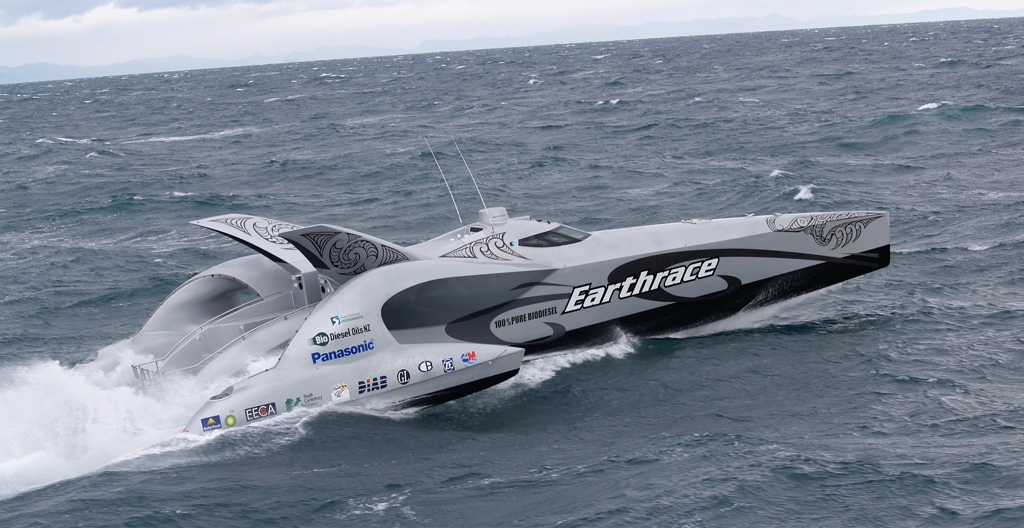
I think the Claw will be a fusion of some of these ideas. Ultimately I will have to have a go at creating a 3D model in Blender.

An island in space

One of the places that Orlando Jax visits is the Shepherd Moon. From the book:
"In one graceful movement, the Claw emerged from hyperspace and took up an orbit around the great ringed gas giant Ching Yi, named after a very famous and successful Old Earth pirate. Gradually the Claw aligned itself with the rings, and then with a particular gap in the rings.
Jax looked up at the main display. There, lying peacefully in the gap, was the Shepherd Moon, a little asteroid that had served as a bank and store room for many generations of pirates."

ESA/Hubble & NASA
The great ringed gas giant Ching Yi? Well, no. Unfortunately we don't have clear pictures of planets outside our solar system yet but incredibly we are getting there thanks to spacecraft like TESS. In the meantime, this is a brilliant image of Saturn, compiled by Mattias Malmer from 102 frames taken by the Cassini spacecraft. You can read the full story of this image here.
The inspiration for the Shepherd Moon comes from another fabulous image taken by the Cassini spacecraft. It returned a picture that NASA refers to as the "Wavemaker Moon" - Saturn's ring moon Daphnis - and you can see why in this amazing picture:

NASA/JPL/Space Science Institute
There between the rings is the Wavemaker Moon. You can read the full story of this picture here.
A good place to hide a stash of pirate treasure? I think so. One day I will have to draw the map to the Wavemaker Moon.
Back to topSpace Ship Classes
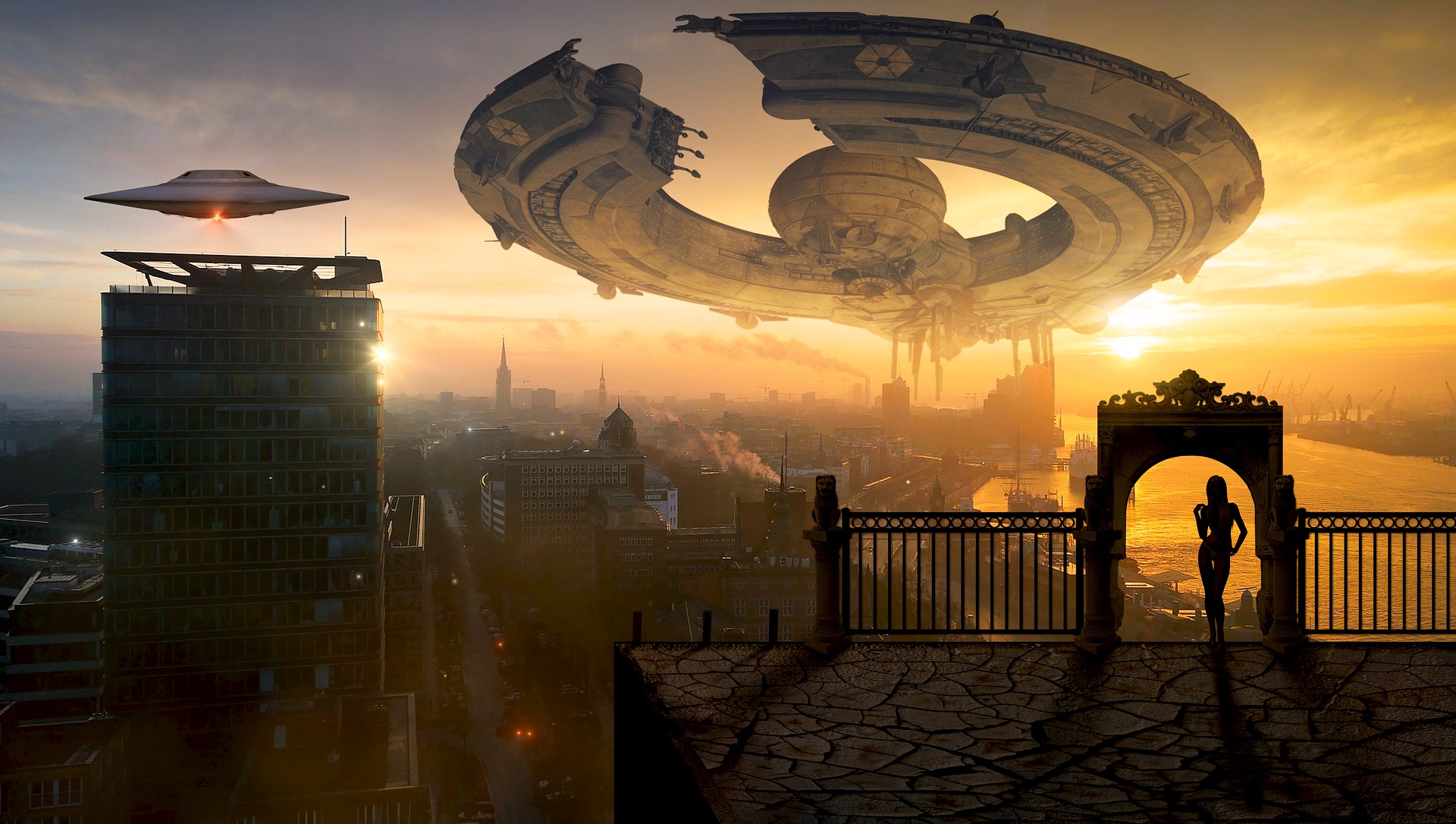
I think it will be inevitable that the space ships of the future will have to be classified and certified. Currently, just about every vehicle on Earth carries one or more certifications of some kind. Space ships will be no different. Certifications are usually required to guarantee some level of safety for crew, passengers and cargo, and a level of assurance that a voyage will be successful. Even space pirates, who don't give a damn about certification authorities, still want to know that their ships are capable of engaging in despicable deeds.
The Gildo de la Serĉanto are not the authority that certifies space ships or gives them any authority to travel, but given the Guild's very keen interest in the ability of ships to explore the Universe, they do have their own ship classification scheme. The Guild has defined four classes of space ship and the class sets an expectation as to the not to be exceeded range of operations from the ship's registered home planet. The four classes are:
- Luna
- Stela
- Galaxsia
- Tuta
Classification is based on several factors, but the fundamental consideration is crew survival. To this end the Gildo de la Serĉanto places great emphasis on the methods employed, and the duration that a ship is able to keep alive a crew following more than one significant equipment failure. The key driver for acceptable durations is the time it takes to launch a rescue mission.
Luna

Classification to Luna level allows a Captain to take a ship a distance from their home planet no greater than the apogee of the furthest moon exclusively orbiting that planet. Typically Luna ships are used as hypersonic passenger and cargo transports between a home planet, space stations and moons.
Stela
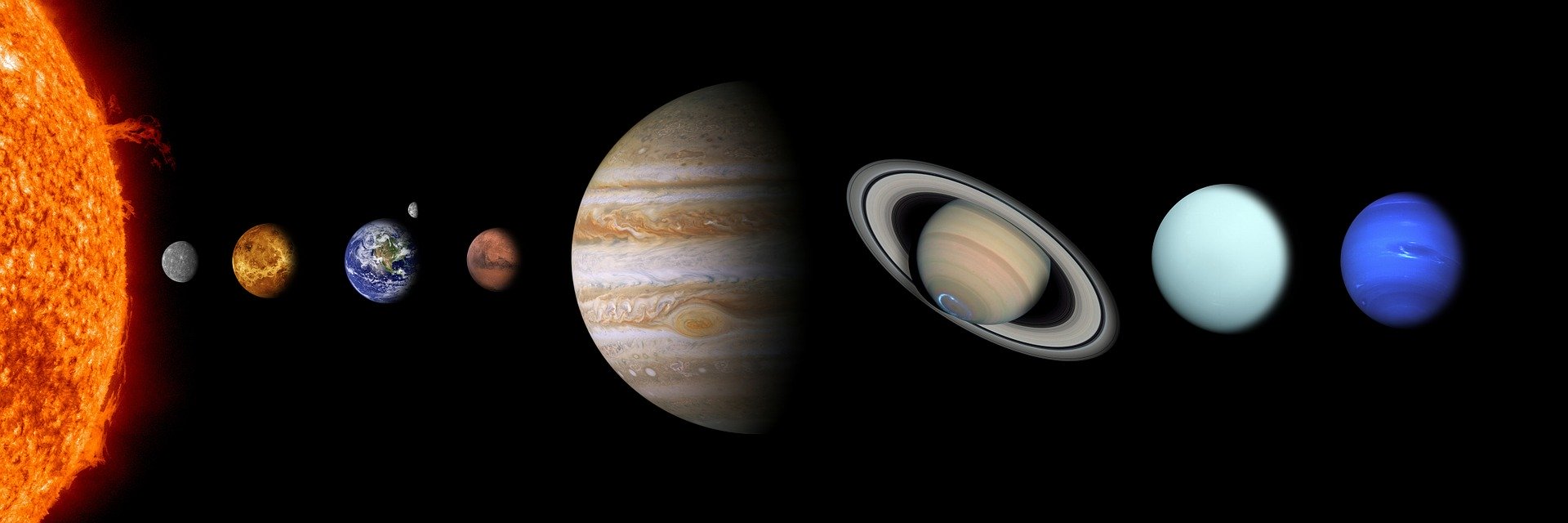
Classification to Stela level allows a Captain to take a ship a distance from their home planet no greater than the apogee of the furthest planet exclusively orbiting the star or stars orbited by their home planet. Stela ships were a natural progression from Luna vessels and accelerated the search for forcing engines (faster than light technology) and gravity plates (gravity and inertia control). Now these technologies represent a fundamental baseline for all designs of Stela ships.
Galaxsia

ESA/Hubble & NASA
Classification to Galaxsia level allows a Captain to take a ship to the edges of the galaxy or nebula containing their home planet. Galaxsia ships are a development of the Stela ship baseline exhibiting significantly upgraded power systems and greater reliability, availability and maintainability, as well as enhanced crew life support and survival systems.
Tuta

ESA/Hubble & NASA
Classification to Tuta level sets no limit on distance. Tuta ships are cleared to explore the entire universe. They are the natural conclusion to the development of Galaxsia ships. They spearhead the Serĉanto's mission to find the routes to new galaxies. Their Navigators, whether they return or not, are the stuff of legend.